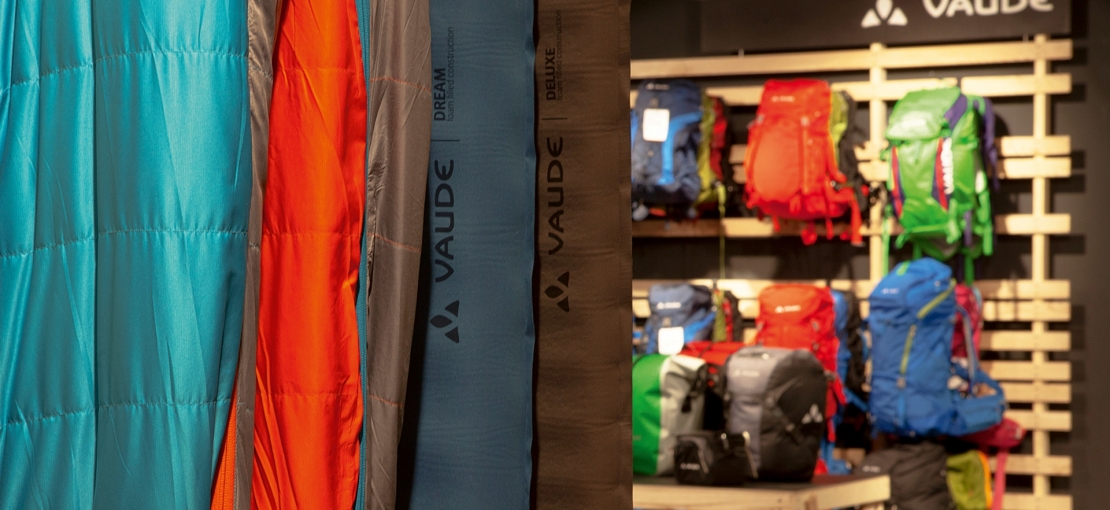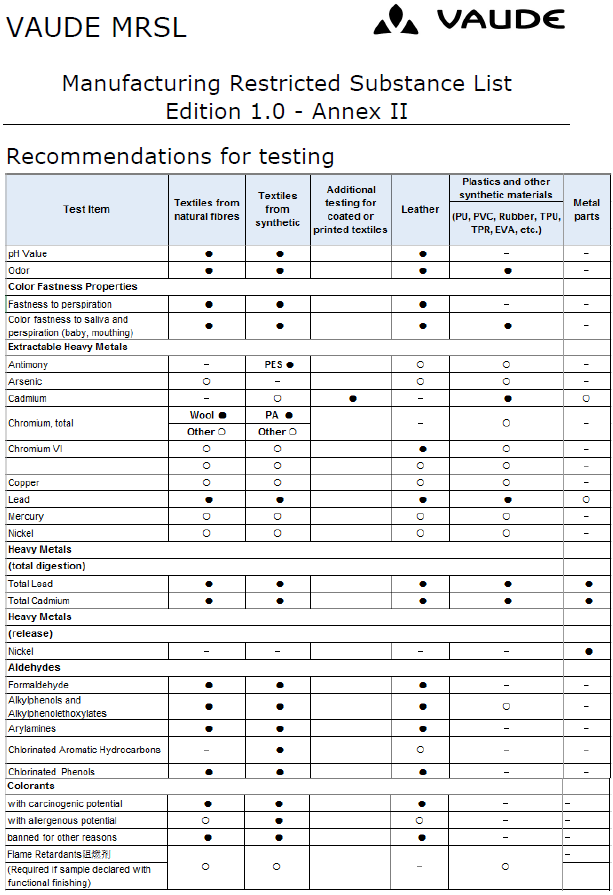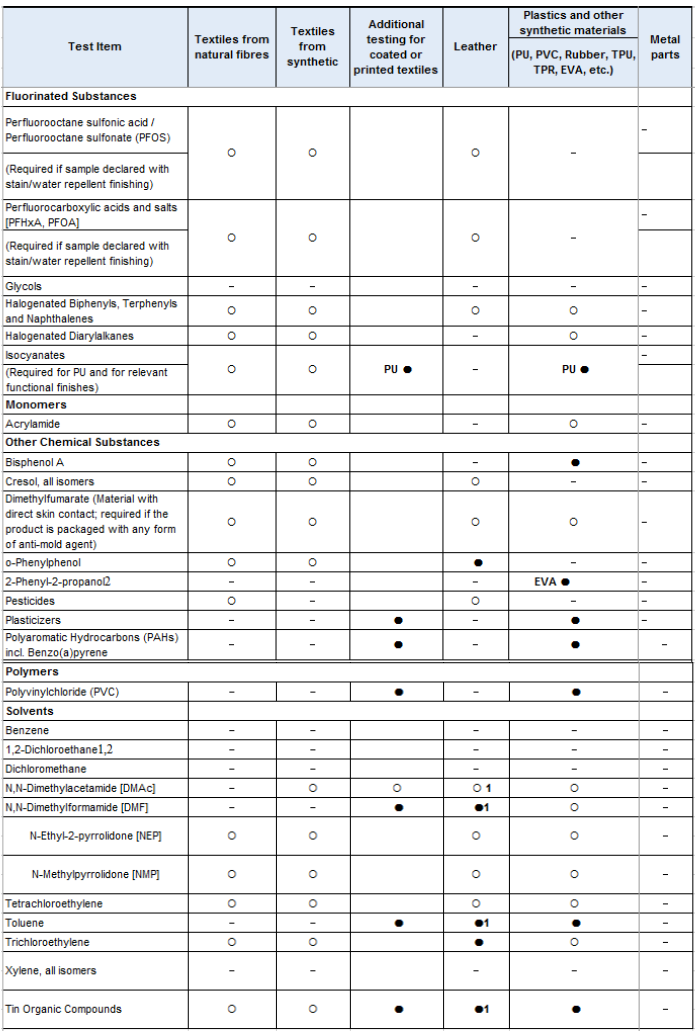
No risk, no fun?
Risk analysis begins with material selection
We have set ourselves even stricter limits for hazardous substances than those stipulated by law. In each season, we assess the risk of contamination of all new articles and products. We pay particular attention to all of our children's products and products that are worn directly on the skin.
Here are the most important steps in our risk assessment process
1. Supplier selection
The selection of reliable, reputable suppliers is the most important step in our risk assessment. We try as far as possible to use suppliers that are bluesign® system partners and have implemented the input stream management approach at their production sites. These suppliers use only safe chemicals and both the materials and the manufacturing process correspond to the best available technology (BAT) approach.
2. Material-related risk assessment
We use a wide variety of materials that require a wide variety of chemicals – which could be found in the finished products. For this reason, us use different tests for different materials.
3. Material Categories
| 1 | 2 | 3 | 4 | 5 | 6 |
|---|---|---|---|---|---|
|
Textiles and textile goods made from natural fibers |
Textiles and textile goods made from synthetic fibers |
Textiles and textile goods with prints /coatings |
Leather |
Plastics (PU, PVC, rubber, TPU, TPR, EVA etc.) |
Metal elements |
4. MRSL Test range per material



5. Systematic analysis of hazardous substances
Our assessment method for hazardous substance management is represented in a flowchart that we follow for each product. In this risk analysis process, we find out which tests are necessary to detect any existing hazardous substances.
Our assessment system is divided into an assessment of the product's area of use, an evaluation of the materials used and an assessment of the overall product.
For example, if we make a bike shirt for children made of synthetic fibers with a large print, then the T-shirt falls into the highest risk class with regard to the application area. The synthetic material is at a higher risk for contaminants such as antimony or organotin compounds. The large print may also contain plasticizers, thereby increasing the risk. But if we use bluesign® materials for the shirt, the risk is very low because the use of materials has already been rigorously controlled.
Tests in independent laboratories
For new materials, existing test reports or certificates are evaluated and additional tests are carried out if necessary in order to ensure compliance with our MRSL and legal requirements.
Sample testing on the finished product is only intended to ensure that our chemical management system has worked. In addition, we take several articles from the production line each season and have them tested in an independent laboratory.
When there are discrepancies, we evaluate them in accordance with VAUDE’s own very strict limits or the legal limits of the sale country. Necessary measures are taken. In the worst-case scenario, we destroy the merchandise.
Risk analysis of producers’ supply chains
We have developed a producer ranking that helps us to identify weak areas in our system. Together with our producers, a risk analysis of their local supply chain (non-nominated materials) has been carried out since 2014 in order to further minimize risks.
All producers are evaluated according to this new system. We have found significant differences in the organization of chemical management with various producers. Together with the producers, we develop and track Corrective Action Plans.
Tackling problems at their source
We rely on partnership-based, active relationships with our producers to tackle problems at their source. We want to make sure – right from the beginning of production – that products meet our requirements. When we examine finished merchandise at the end of production, we have only limited or no ability to react.
| GRI: | G4-PR1 |






